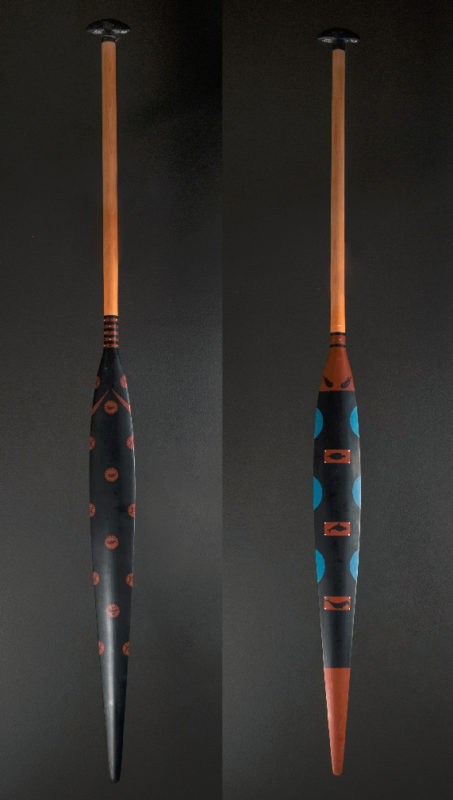Jerry Laktonen was born in Kodiak in 1951. His ancestry is Koniag Alutiiq and Athabaskan plus Norwegian and Russian Finn, reflecting the history of Kodiak. He lived in Larsen Bay and Kodiak until the 1964 earthquake. Jerry resided in Seattle, Washington from 1964-1974 and attended the University of Washington and Seattle Pacific University.
“My affinity for wood has been simmering below the surface all my life: I fished in wood boats and watched my father and uncles make skiffs, repair, and rebuild all sorts of vessels and homes. Their woodworking skills were westernized use of wood as the formal remnants of culture was pretty much lost, both in Russian times and in American schools that “encouraged” the change. I learned by watching and felt natural around the wood and their use of tools and construction. I did not know I was learning. I later used the skills to fashion my life. I fished and I tried to keep my wood boat afloat. I now realize that I had absorbed the elements of Alutiiq culture and confidence in using my hands to do what needed to be done, in the most efficient manner. The skills were passed on unknowingly through my family.”
In addition to making beautiful masks, Jerry also creates fine replicas of ceremonial “Baidarka” paddles. Baidarkas (kayaks) from Kodiak were used for hunting marine mammals, fishing, and general travel. Hunting parties consisting of 500 or more multi-holed baidarkas pursued the sea otter. During the Russian occupation (1770’s-1860’s), the Koniags were forced to travel the Pacific coast as far south as Fort Ross in California in pursuit of sea otters. Baidarkas with one, two or three openings or seats were propelled by single bladed paddles made from wood. The design of the Koniag paddle allows a kneeling paddler, both stealth ability when hunting or deep power paddling when needed. They were also used for stabilizing when throwing a spear. These were the hunters’ most prized personal possessions and were reportedly broken and buried with their owner upon death. As in the baidarka itself, the Koniag (Alutiiq) paddle represents the pinnacle of marine design.
The design elements are taken from ceremonial paddles of the Russian era and before. As these implements were not widely collected, ceremonial paddles are very hard to locate. Davydov, a Russian, reported ceremonial paddles decorated with fish and mammals brandished in a Koniag ceremony in 1802. During Russian occupation, time to paint ceremonial paddles may have been in lower priority to food gathering, considering the time spent hunting otter. Conversion to Christianity also certainly played a part.
“I use authentic elements of shape, color, and painted forms. Original paddles are painted with fermented seal blood or minerals (example red ochre). I use acrylic paint on local spruce. I feel fortunate to be at this stage in my life with the surge of interest and knowledge of Kodiak history and Koniag culture. I am humbled by the art and the craft abilities of those before us. Knowledge will paint a new picture of pre-contact natives, both to students of their culture as well as their descendants.” – Jerry Laktonen

